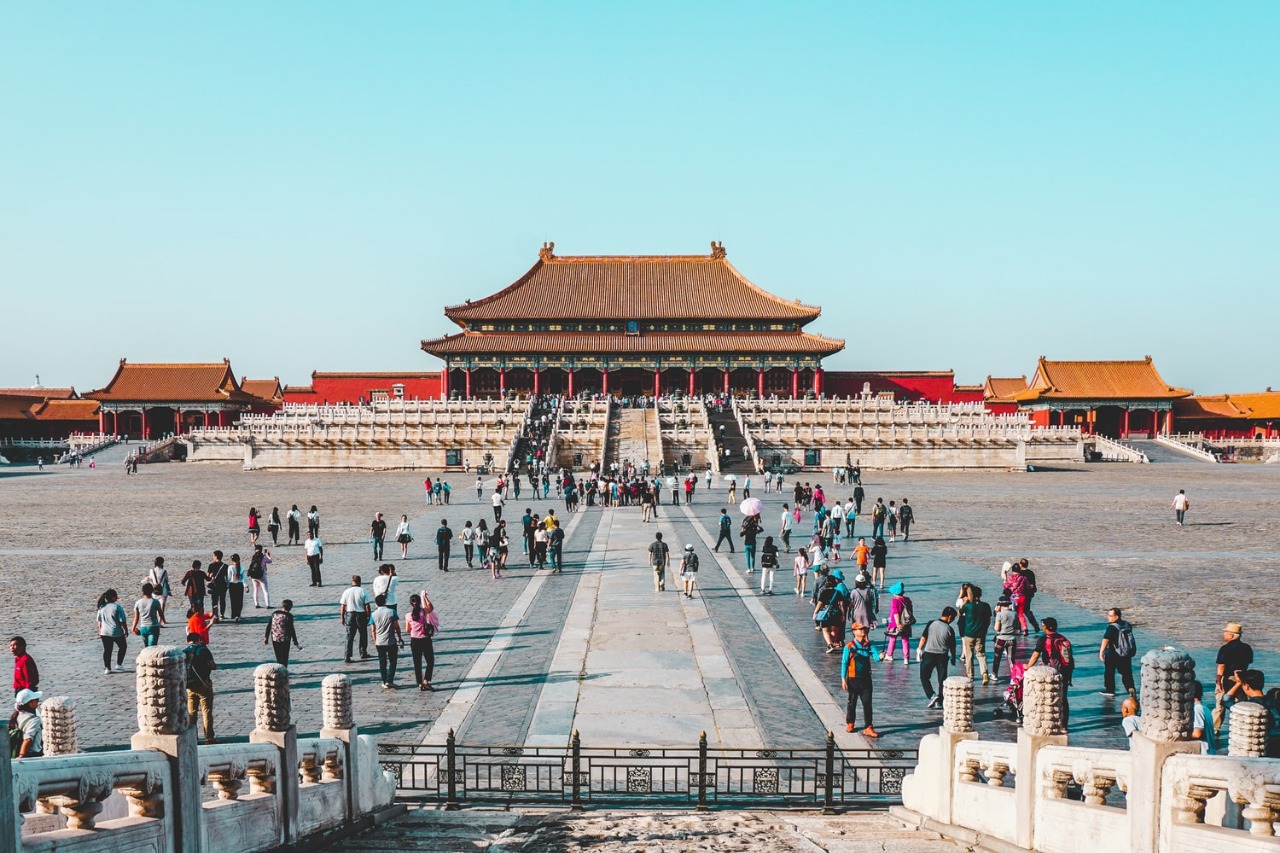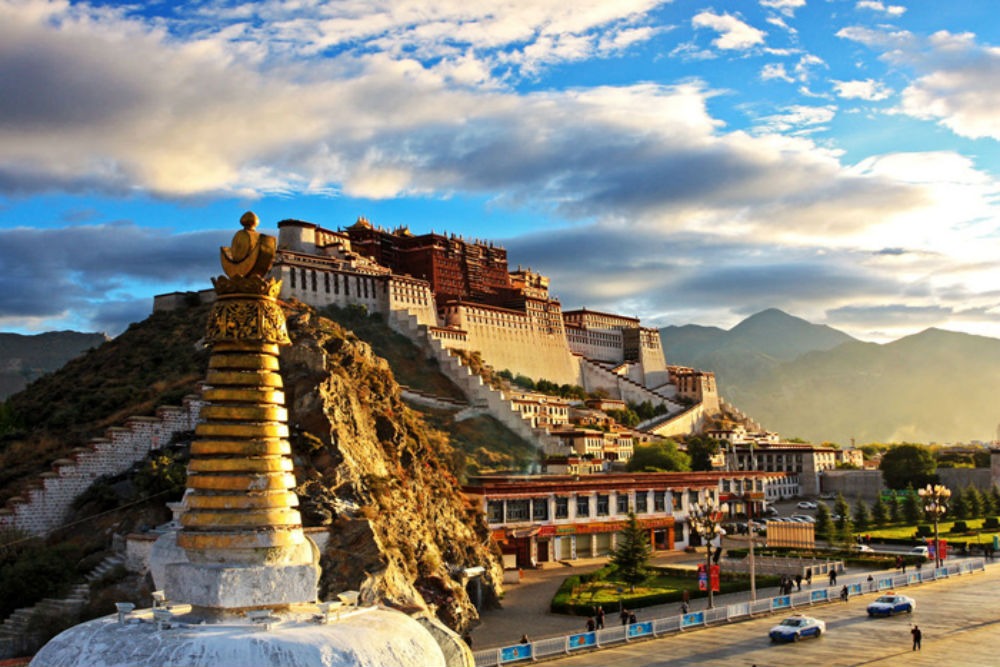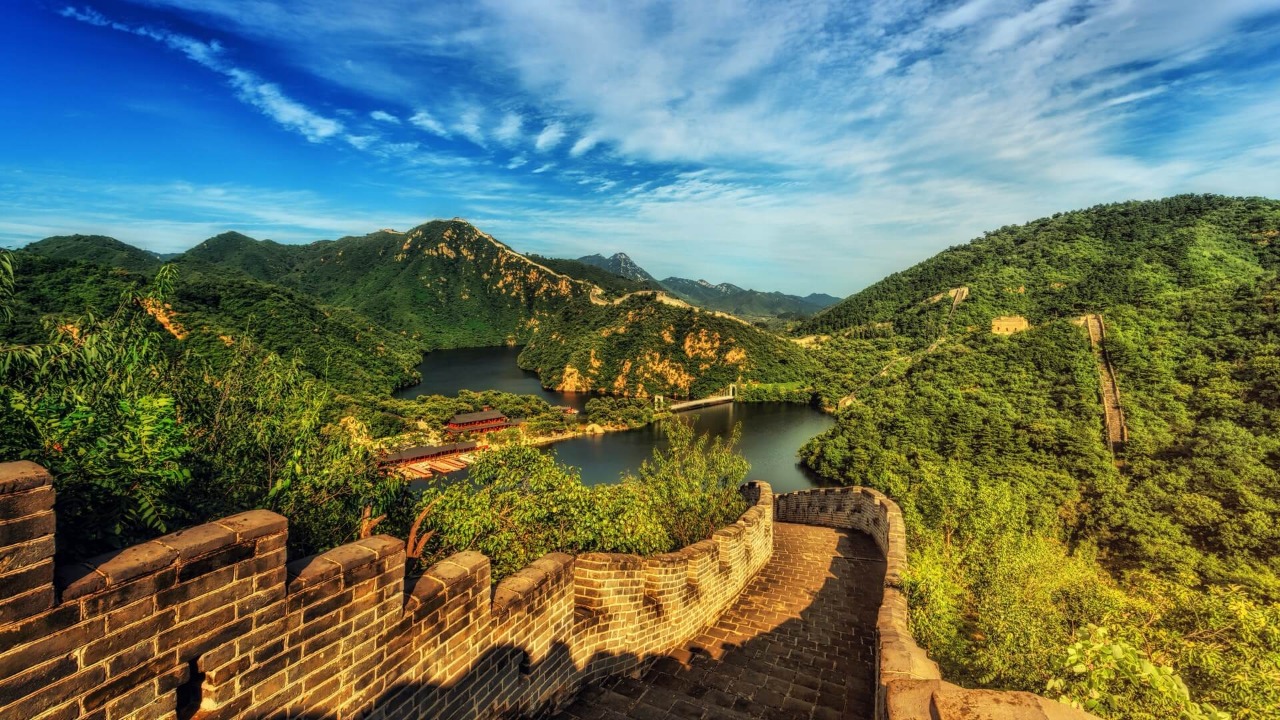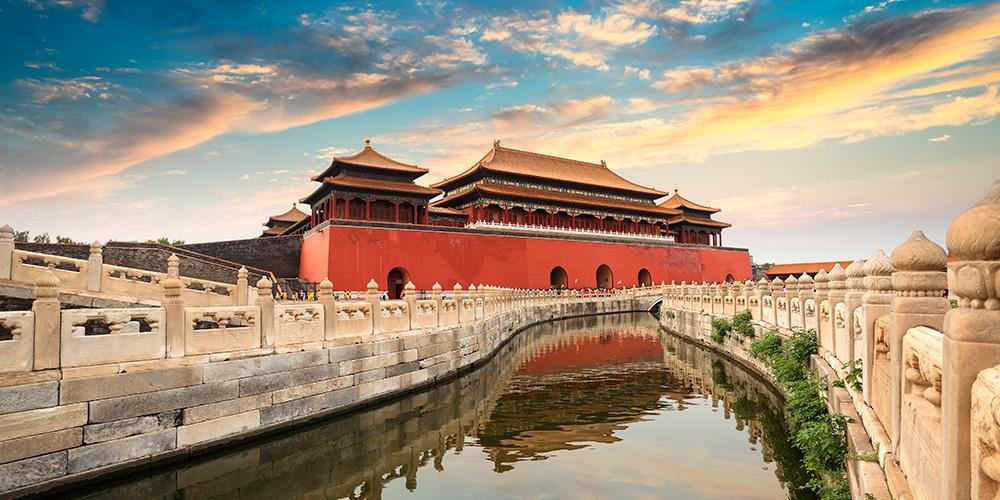Fotos de: China
Mapa de localização
Aeroportos
Hotéis e outros Alojamentos
Campos de Golfe
O que visitar
Onde Comer
Onde Divertir
Consulados & Embaixadas
World Nomads
O Seguro de viagem com as maiores coberturas

O Seguro de viagem com as maiores coberturas

China
A China, fundada em 1912 como Republica da China, antecedida pela Dinastia Qing, é hoje chamada República Popular da China, sendo um país soberano localizado na Ásia Oriental.
É o país mais populoso do mundo, com uma população de mais de 1,35 biliões de habitantes.
A República Popular da China é um Estado de partido único governado pelo Partido Comunista, com a sua sede do governo na capital em Beijing (Pequim).
O país exerce jurisdição sobre 22 províncias, cinco regiões autónomas, quatro municípios controlados directamente (Pequim, Tianjin, Shanghai, e Chongqing) e duas regiões administrativas especiais autónomas (Hong Kong e Macau).
A RPC mantém a afirmação que Taiwan - que é controlada pela República da China (ROC), uma entidade política separada – é a sua 23ª província, uma reivindicação que é controversa devido ao estado político complexo de Taiwan.
Abrangendo cerca de 9,6 milhões de quilómetros quadrados, a China é o segundo maior país do mundo em área territorial, e, ou o terceiro ou quarto maior pela área total, dependendo do método de medição.
A paisagem de China é vasta e diversificada, variando desde planícies verdejantes e desertos de Gobi Taklamakan no norte árido até às florestas tropicais húmidas no sul.
Os Himalaias, Karakoram, Pamir e Tian Shan são montanhas que separam a China do Sul na Ásia Central. Os rios Yangtze e Amarelo, respetivamente o terceiro e sexto rios maiores do mundo, com nascentes no planalto tibetano fluem em direção à costa leste densamente povoada.
A costa da China ao longo do Oceano Pacífico tem 14.500 quilómetros (9.000 milhas) de comprimento.
É o país mais populoso do mundo, com uma população de mais de 1,35 biliões de habitantes.
A República Popular da China é um Estado de partido único governado pelo Partido Comunista, com a sua sede do governo na capital em Beijing (Pequim).
O país exerce jurisdição sobre 22 províncias, cinco regiões autónomas, quatro municípios controlados directamente (Pequim, Tianjin, Shanghai, e Chongqing) e duas regiões administrativas especiais autónomas (Hong Kong e Macau).
A RPC mantém a afirmação que Taiwan - que é controlada pela República da China (ROC), uma entidade política separada – é a sua 23ª província, uma reivindicação que é controversa devido ao estado político complexo de Taiwan.
Abrangendo cerca de 9,6 milhões de quilómetros quadrados, a China é o segundo maior país do mundo em área territorial, e, ou o terceiro ou quarto maior pela área total, dependendo do método de medição.
A paisagem de China é vasta e diversificada, variando desde planícies verdejantes e desertos de Gobi Taklamakan no norte árido até às florestas tropicais húmidas no sul.
Os Himalaias, Karakoram, Pamir e Tian Shan são montanhas que separam a China do Sul na Ásia Central. Os rios Yangtze e Amarelo, respetivamente o terceiro e sexto rios maiores do mundo, com nascentes no planalto tibetano fluem em direção à costa leste densamente povoada.
A costa da China ao longo do Oceano Pacífico tem 14.500 quilómetros (9.000 milhas) de comprimento.
Língua Oficial
Mandarim
Moeda
Renminbi
Turismo
A China é um País oriental cheio de mistério e imaginação, acolhendo imensos turistas provenientes de todo o mundo. Este país consagrado pelo tempo tem imensas atracções culturais e naturais à espera de ser explorado.
Entre tantas maravilhas que podem ser visitadas encontra-se a Grande Muralha da China, uma das grandes maravilhas do mundo, uma monumental obra do primeiro monarca Qin Shi Huang. O seu túmulo está em Xi'an, guardada pelo misterioso exército de terracota, estando ainda muito por escavar. Um dos extremos da mítica rota da seda, Xi'an ainda guarda preciosidades como a sua cidade murada, as torres do tambor o sino e veneráveis templos.
Foi considerada como um patrimônio cultural da humanidade pela UNESCO em 1987 e tornou-se um ícone nacional da China.
Outra beleza, é a Cidade Proibida construída há cerca de 600 anos, tendo desempenhado um papel importante na história chinesa. Foi o palácio imperial da Dinastia Ming e Qing do imperador Yongle.
Neste palácio o turista consegue vislumbrar a vida dos antigos imperadores. Existem mais de 8000 quartos no palácio. A Cidade Proibida tem a maior coleção de antigas estruturas de madeira preservadas no mundo.
Outro popular destino turístico, o famoso Palácio de Verão é o jardim real maior e mais bem preservado na China. É uma mistura de paisagens naturais e de paisagem artificial. As montanhas, água e arquitetura juntos formam cenas pitorescas que são incrivelmente bonitas. A UNESCO declarou o Palácio de Verão, uma obra-prima do paisagismo chinês. A paisagem natural de colinas e água é combinada com elementos artificiais tais como pavilhões, salões, palácios, templos e pontes para formar um conjunto harmonioso de grande valor estético.
Formado por linhas de siheyuan, residências pátio tradicionais, as Hutongs são um tipo de estreitas ruas ou vielas. As Hutongs não são apenas parte das residências de Pequim, mas também uma parte indispensável da cultura chinesa. É uma caraterística única da velha Pequim, que surpreende. As áreas Hutong conhecidas são Shichahai e Gong Sul e a pista de Tambor.
Templo Lama (Palácio Yonghe), em Beijing, construído em estilo tibetano, em 1694. Foi a residência do príncipe manchu Haze, que tornou-se o imperador Yongzheng, em 1723. O local transformou-se, então, em palácio imperial. O templo abriga um grande número de relíquias budistas e outras preciosidades.
Junto ao litoral estão três símbolos da nova China. A vanguardista Xangai motor do poderio económico do país, notabilizada pelos seus grandiosos prédios contemporâneos que minimizam o histórico Bund.
Em direcção ao sul está Macau, com longínquas influências portuguesas, onde casinos gigantescos disputam o espaço com as calçadas e edifícios que dão um certo ar típico à cidade. Não muito longe, está a fervilhante Hong Kong, cenário de clássicos filmes de kung-fu, vertical nas linhas de seus arranha-céus, horizontal no braço de mar que divide Kowloon da Ilha Vitória.
A imensa dimensão territorial chinesa leva-nos em direção dos manchus do nordeste aos tibetanos dos Himalaias, dos muçulmanos de Kashgar aos trabalhadores Han na faixa junto ao mar.
Entre tantas maravilhas que podem ser visitadas encontra-se a Grande Muralha da China, uma das grandes maravilhas do mundo, uma monumental obra do primeiro monarca Qin Shi Huang. O seu túmulo está em Xi'an, guardada pelo misterioso exército de terracota, estando ainda muito por escavar. Um dos extremos da mítica rota da seda, Xi'an ainda guarda preciosidades como a sua cidade murada, as torres do tambor o sino e veneráveis templos.
Foi considerada como um patrimônio cultural da humanidade pela UNESCO em 1987 e tornou-se um ícone nacional da China.
Outra beleza, é a Cidade Proibida construída há cerca de 600 anos, tendo desempenhado um papel importante na história chinesa. Foi o palácio imperial da Dinastia Ming e Qing do imperador Yongle.
Neste palácio o turista consegue vislumbrar a vida dos antigos imperadores. Existem mais de 8000 quartos no palácio. A Cidade Proibida tem a maior coleção de antigas estruturas de madeira preservadas no mundo.
Outro popular destino turístico, o famoso Palácio de Verão é o jardim real maior e mais bem preservado na China. É uma mistura de paisagens naturais e de paisagem artificial. As montanhas, água e arquitetura juntos formam cenas pitorescas que são incrivelmente bonitas. A UNESCO declarou o Palácio de Verão, uma obra-prima do paisagismo chinês. A paisagem natural de colinas e água é combinada com elementos artificiais tais como pavilhões, salões, palácios, templos e pontes para formar um conjunto harmonioso de grande valor estético.
Formado por linhas de siheyuan, residências pátio tradicionais, as Hutongs são um tipo de estreitas ruas ou vielas. As Hutongs não são apenas parte das residências de Pequim, mas também uma parte indispensável da cultura chinesa. É uma caraterística única da velha Pequim, que surpreende. As áreas Hutong conhecidas são Shichahai e Gong Sul e a pista de Tambor.
Templo Lama (Palácio Yonghe), em Beijing, construído em estilo tibetano, em 1694. Foi a residência do príncipe manchu Haze, que tornou-se o imperador Yongzheng, em 1723. O local transformou-se, então, em palácio imperial. O templo abriga um grande número de relíquias budistas e outras preciosidades.
Junto ao litoral estão três símbolos da nova China. A vanguardista Xangai motor do poderio económico do país, notabilizada pelos seus grandiosos prédios contemporâneos que minimizam o histórico Bund.
Em direcção ao sul está Macau, com longínquas influências portuguesas, onde casinos gigantescos disputam o espaço com as calçadas e edifícios que dão um certo ar típico à cidade. Não muito longe, está a fervilhante Hong Kong, cenário de clássicos filmes de kung-fu, vertical nas linhas de seus arranha-céus, horizontal no braço de mar que divide Kowloon da Ilha Vitória.
A imensa dimensão territorial chinesa leva-nos em direção dos manchus do nordeste aos tibetanos dos Himalaias, dos muçulmanos de Kashgar aos trabalhadores Han na faixa junto ao mar.
Gastronomia
As diferentes províncias da China contribuíram para a história da culinária chinesa.
Cada cozinha regional varia significativamente em termos de estilo de preparação dos alimentos. Especialidades culinárias budistas e muçulmanas também fazem parte, da imensa cozinha chinesa.
Os peixes são normalmente servidos inteiros e os comensais são hábeis a retirar pedaços do peixe usando os seus pauzinhos.
Frango é outro prato favorito de carne em muitas refeições chinesas. Enquanto o frango é cortado em partes, cada peça é servido incluindo as moelas e cabeça.
Numa refeição chinesa, a cada indivíduo é fornecida uma tigela de arroz, enquanto os pratos complementares são servidos em pratos ou tigelas partilhadas.
A famosa cozinha cantonesa, talvez a mais representativa da China no mundo, repleta de deliciosos dim-sums, pequenos e variados pratos preparados das mais diferentes formas. Outro estilo gastronómico apreciado é o de Sichuan, perfumado, pungente e muito, muito condimentando. Para acompanhar tudo isto, nada como uma taça de chá de alta qualidade.
Um chá quente ou água quente é comum ser servido numa refeição chinesa. Bebidas frias, como refrigerantes ou água são considerados prejudiciais à digestão de alimentos quentes.
O chá é tido como um bom digestivo dos alimentos gordurosos.
Aliás, chá, é provavelmente a palavra chinesa mais difundida pelo planeta, transformando-se em tea, té, the, chai, tsái e muitas outras variações em dezenas de outros idiomas.
Cada cozinha regional varia significativamente em termos de estilo de preparação dos alimentos. Especialidades culinárias budistas e muçulmanas também fazem parte, da imensa cozinha chinesa.
Os peixes são normalmente servidos inteiros e os comensais são hábeis a retirar pedaços do peixe usando os seus pauzinhos.
Frango é outro prato favorito de carne em muitas refeições chinesas. Enquanto o frango é cortado em partes, cada peça é servido incluindo as moelas e cabeça.
Numa refeição chinesa, a cada indivíduo é fornecida uma tigela de arroz, enquanto os pratos complementares são servidos em pratos ou tigelas partilhadas.
A famosa cozinha cantonesa, talvez a mais representativa da China no mundo, repleta de deliciosos dim-sums, pequenos e variados pratos preparados das mais diferentes formas. Outro estilo gastronómico apreciado é o de Sichuan, perfumado, pungente e muito, muito condimentando. Para acompanhar tudo isto, nada como uma taça de chá de alta qualidade.
Um chá quente ou água quente é comum ser servido numa refeição chinesa. Bebidas frias, como refrigerantes ou água são considerados prejudiciais à digestão de alimentos quentes.
O chá é tido como um bom digestivo dos alimentos gordurosos.
Aliás, chá, é provavelmente a palavra chinesa mais difundida pelo planeta, transformando-se em tea, té, the, chai, tsái e muitas outras variações em dezenas de outros idiomas.
Clima
A China, sendo um vasto território abrangendo várias latitudes e com uma diversificação geográfica, tem um clima que varia radicalmente consoante as zonas, desde as suas temperaturas e chuvas, incluindo as zonas das monções continentais.
No inverno, a maioria das áreas tornam-se frias e secas, no verão quentes e chuvosas.
Cinco zonas de temperatura
As temperaturas variam muito. Influenciadas pelas diferentes atividades nas diferentes latitudes e de monções, no inverno, uma corrente fria de 0ºC, atravessa o Rio Huaihe, as Montanhas Qinling, o sudeste do Qinghai e o Planalto do Tibet.
Áreas norte têm temperaturas abaixo de 0ºC, e o sul acima de 0ºC.
Mohe em Heilongjiang pode atingir em média -30º C, enquanto a temperatura de Sanya na Província de Hainan atinge temperaturas acima de 20ºC.
No verão, a maioria das áreas têm temperaturas acima de 20ºC, mesmo as que se encontram no alto Planalto Qinghai-Tibet e outras montanhas , como Tianshan .
Entre estes lugares quentes, a Bacia Turpan em Xinjiang é em média o centro do intenso calor a 32ºC.
Zona Fria:
Parte norte da província de Heilongjiang e Mongólia Interior (Cidade: Harbin).
Zona Amena:
Jilin, no norte de Xinjiang, e mais de Heilongjiang, Liaoning e Mongólia Interior ( cidades: Pequim , Shenyang , Dalian, Urumqi, Hohhot, Dunhuang , Lanzhou).
Zona Quente:
Área das correntes média e inferior do Rio Amarelo, Shandon , Shanxi, Shaanxi e Hebei (cidades: Xian , Taiyuan, Luoyan , Jinan , Qingdao , Zhengzhou).
Zona Subtropical :
Sul de Qinling Mountain, Huaihe River, a leste do Planalto Qinghai-Tibet (cidades: Xangai, Cantão, Hong Kong , Macau , Guilin , Hangzhou , Suzhou , Kunming , Dali , Lijiang , Chengdu)
Zona Tropical:
Província de Hainan, sul de Taiwan , Guangdong, e Província de Yunnan (cidades: Haikou , Sanya)
A precipitação na China é basicamente regular, em cada ano.
Na zona mais chuvosa, Huoshaoliao em Taipei, a precipitação média anual pode chegar a mais de 6.000 mm. As estações chuvosas são principalmente Maio a Setembro. Em algumas zonas, especialmente no nordeste seco, as mudanças na precipitação em cada ano são maiores do que na zona costeira. Com base na precipitação, a área divide-se em quatro partes: área húmida, área semi-húmida, área semi-seca e área seca.
Monção:
No verão, a monção do sudeste do Oceano Pacífico ocidental e uma monção sudoeste do Oceano Índico equatorial sopram em direção ao continente chinês. Estas monções são a principal causa de chuvas.
A partir de abril e maio, as monções, (estação chuvosa de verão), atingem as províncias de Guangdong , Guangxi, Hainan.
Parte norte do país recebe a sua estação chuvosa, em julho e agosto diminuindo em setembro e gradualmente em outubro as monções de verão terminam.
No inverno, a maioria das áreas tornam-se frias e secas, no verão quentes e chuvosas.
Cinco zonas de temperatura
As temperaturas variam muito. Influenciadas pelas diferentes atividades nas diferentes latitudes e de monções, no inverno, uma corrente fria de 0ºC, atravessa o Rio Huaihe, as Montanhas Qinling, o sudeste do Qinghai e o Planalto do Tibet.
Áreas norte têm temperaturas abaixo de 0ºC, e o sul acima de 0ºC.
Mohe em Heilongjiang pode atingir em média -30º C, enquanto a temperatura de Sanya na Província de Hainan atinge temperaturas acima de 20ºC.
No verão, a maioria das áreas têm temperaturas acima de 20ºC, mesmo as que se encontram no alto Planalto Qinghai-Tibet e outras montanhas , como Tianshan .
Entre estes lugares quentes, a Bacia Turpan em Xinjiang é em média o centro do intenso calor a 32ºC.
Zona Fria:
Parte norte da província de Heilongjiang e Mongólia Interior (Cidade: Harbin).
Zona Amena:
Jilin, no norte de Xinjiang, e mais de Heilongjiang, Liaoning e Mongólia Interior ( cidades: Pequim , Shenyang , Dalian, Urumqi, Hohhot, Dunhuang , Lanzhou).
Zona Quente:
Área das correntes média e inferior do Rio Amarelo, Shandon , Shanxi, Shaanxi e Hebei (cidades: Xian , Taiyuan, Luoyan , Jinan , Qingdao , Zhengzhou).
Zona Subtropical :
Sul de Qinling Mountain, Huaihe River, a leste do Planalto Qinghai-Tibet (cidades: Xangai, Cantão, Hong Kong , Macau , Guilin , Hangzhou , Suzhou , Kunming , Dali , Lijiang , Chengdu)
Zona Tropical:
Província de Hainan, sul de Taiwan , Guangdong, e Província de Yunnan (cidades: Haikou , Sanya)
A precipitação na China é basicamente regular, em cada ano.
Na zona mais chuvosa, Huoshaoliao em Taipei, a precipitação média anual pode chegar a mais de 6.000 mm. As estações chuvosas são principalmente Maio a Setembro. Em algumas zonas, especialmente no nordeste seco, as mudanças na precipitação em cada ano são maiores do que na zona costeira. Com base na precipitação, a área divide-se em quatro partes: área húmida, área semi-húmida, área semi-seca e área seca.
Monção:
No verão, a monção do sudeste do Oceano Pacífico ocidental e uma monção sudoeste do Oceano Índico equatorial sopram em direção ao continente chinês. Estas monções são a principal causa de chuvas.
A partir de abril e maio, as monções, (estação chuvosa de verão), atingem as províncias de Guangdong , Guangxi, Hainan.
Parte norte do país recebe a sua estação chuvosa, em julho e agosto diminuindo em setembro e gradualmente em outubro as monções de verão terminam.
Documentação
Para quem deseje entrar na China como turista é necessário um visto de turista (Visa L), e para proceder ao seu pedido necessita dos seguintes documentos:
1. Passaporte válido no mínimo de 6 (seis) meses de validade até á data de saída da China, com pelo menos uma página em branco para colocação do visto.
2. Formulário de aplicação de visa.
3. Uma foto recente de tipo passaporte (preto e branco ou a cores é aceitável) juntamente com o formulário de aplicação .
Para proceder ao pedido de Visto Turístico deve contactar Embaixada ou Consulado -Geral , que detém jurisdição consular no País de residência.
O tempo de processamento normal é de 4 dias úteis.
Normalmente, a validade de um visto L (entrada única ou de dupla entrada), é de 90 dias ou 180 dias a contar da data de emissão. Isto significa que o titular do visto deve entrar na China, o mais tardar 90 dias ou 180 dias a partir da data de emissão, caso contrário, o visto perderá a sua validade.
Normalmente, a duração da estada de um visto "L" é de 30 dias, o que significa que o titular do visto poderá permanecer na China até 30 dias a partir da data de entrada. Se a sua estadia na China for estimada em mais de 30 dias, deve ficar claro no formulário de aplicação e pedir a respectiva aprovação do Visa oficial ao fazer a aplicação.
Todas as normas estão sujeitas a alterações sem aviso prévio.
1. Passaporte válido no mínimo de 6 (seis) meses de validade até á data de saída da China, com pelo menos uma página em branco para colocação do visto.
2. Formulário de aplicação de visa.
3. Uma foto recente de tipo passaporte (preto e branco ou a cores é aceitável) juntamente com o formulário de aplicação .
Para proceder ao pedido de Visto Turístico deve contactar Embaixada ou Consulado -Geral , que detém jurisdição consular no País de residência.
O tempo de processamento normal é de 4 dias úteis.
Normalmente, a validade de um visto L (entrada única ou de dupla entrada), é de 90 dias ou 180 dias a contar da data de emissão. Isto significa que o titular do visto deve entrar na China, o mais tardar 90 dias ou 180 dias a partir da data de emissão, caso contrário, o visto perderá a sua validade.
Normalmente, a duração da estada de um visto "L" é de 30 dias, o que significa que o titular do visto poderá permanecer na China até 30 dias a partir da data de entrada. Se a sua estadia na China for estimada em mais de 30 dias, deve ficar claro no formulário de aplicação e pedir a respectiva aprovação do Visa oficial ao fazer a aplicação.
Todas as normas estão sujeitas a alterações sem aviso prévio.
Saúde
Não há vacinas obrigatórias para entrar na China, mas é recomendável vacinar-se contra o tétano e a poliomielite, sendo necessário preencher um formulário em que é obrigatório declarar que não tem qualquer doença infecciosa.
É aconselhável levar comprimidos para constipações ou infeção intestinal, protetor solar e repelente anti mosquitos.
Consulte o seu médico para mais informações.
Deverá fazer um seguro de saúde privado que cubra toda a sua estadia.
É aconselhável levar comprimidos para constipações ou infeção intestinal, protetor solar e repelente anti mosquitos.
Consulte o seu médico para mais informações.
Deverá fazer um seguro de saúde privado que cubra toda a sua estadia.
Eletricidade
A maioria das tomadas suporta simultaneamente os tipos A e I. Algumas tomadas suportam o tipo C também (os furos nas tomadas são chatos no meio e redondos nos lados) de forma que as fichas do tipos A, C ou I (sem terra) podem ser usadas.
Uma segunda tomada apenas do tipo I (aterrada) fica junto da tomada multi tipo. Tomadas do tipo A apenas encaixam fichas com pinos da mesma largura. Uma ficha do tipo A polarizada requer um adaptador.
Não importa o tipo da tomada, a tensão elétrica na China é sempre 220 volts e 50 Hz.
Uma segunda tomada apenas do tipo I (aterrada) fica junto da tomada multi tipo. Tomadas do tipo A apenas encaixam fichas com pinos da mesma largura. Uma ficha do tipo A polarizada requer um adaptador.
Não importa o tipo da tomada, a tensão elétrica na China é sempre 220 volts e 50 Hz.
Outros destinos turísticos em:
China
China
Outros destinos turísticos mundiais
Porquê reservar com ROTAS TURISTICAS
Os melhores preços
As nossas parcerias com os maiores operadores mundiais, oferecem uma pesquisa dos melhores preços de mercado.
Mais opções
No Rotas Turísticas pode reservar o hotel, comprar a passagem aérea, reservar o transfer do aeroporto para o hotel e vice-versa, reservar as excursões locais, alugar o carro, fazer o seguro de viagem e consultar os locais a visitar e onde ir
Dicas & Destinos de férias
Centenas de destinos de férias com todas as opções que lhe permitem facilmente escolher o destino que melhor combina com as suas férias de sonho.
ROTAS TURISTICAS
Links














